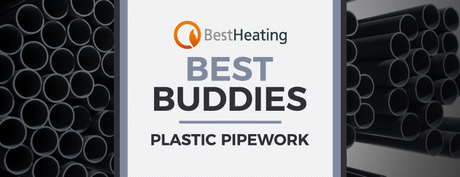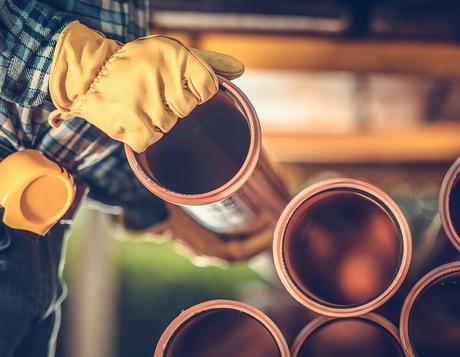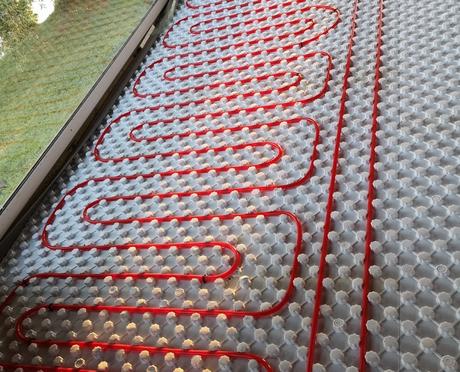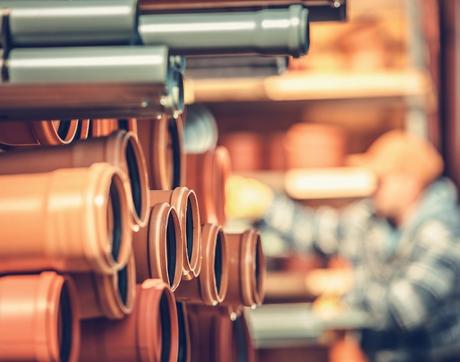
BestHeating Best Buddies – Plastic Pipework
The BestHeating Best Buddies blog series shines a spotlight on some of the more innocuous objects and items that can turn out to be real heroes of the home heating universe.
Here, we pop plastic pipework under the spotlight, bidding to enhance a perhaps maligned reputation in comparison with their carbon fiber or stainless steel counterparts in the public eye.
Read on to gain a proper insight into plastic pipework and its unique advantages and drawbacks, as well as the best scenarios for its installation.
What is Plastic Pipework?
Exactly what it says on the tin. Pipework is a necessity for the operation of a successful central heating system, and therefore the performance of any traditional plumbed radiators or heated towel rails.
Of course, central heating pipework can be manufactured from a range of materials, with stainless steel and carbon fiber most common. Non-metallic options also exist in the form of copper, aluminium, wood, concrete, and the piece de la resistance on which this very article is based – plastic.
Ok, so plastic pipework admittedly might not be held in such reverence as we’ve insinuated there, but is that for good reason or completely unfounded?

The Plastic Pipework Perception
Generally, plastic pipework can often be viewed as the ugly stepchild in relation to the likes of carbon fiber and stainless steel plumbing.
In reality, that likely has a lot to do with the former material even just sounding cheaper, and thus of lesser quality when compared to alternate options.
But akin to Ernesto de la Cruz in Coco, there is more to plastic pipework than meets the eye. (De la Cruz is still not forgiven).
So, in what circumstances is the introduction of plastic pipework a good idea?
Plastic Pipework for Underfloor Heating
That’s right – positioned beneath the floor, plastic pipework might even be the very best option to link up to your central heating supply.
More than up to the task of safely heating the home, there’s a few traits that define plastic plumbing as an excellent underfloor heating choice.
One such key characteristic is its flexibility – the pipes can run up to 25 metres beneath the floor without the requirement for any joints. Think of the very best Stretch Armstrong doll you pined after in your youth, but even longer and bendier!
There’s also no need for flame or soldering with plastic pipes, in contrast to the case with metallic options or copper piping. Such plumbing is far more solid, difficult to maneuver and therefore time-consuming to install underneath the floor. Especially so in a compact property, where there’s quite literally little wiggle room for the fitting.
And as well as saving time with plastic pipework, you also have the potential to save a significant amount of money when selecting it over other types.
For your peace of mind, plastic pipes are properly constructed in line with British standards, and tested to a 10 bar pressure gauge. Furthermore, they offer better resistance to the elements, so are much less likely to freeze in colder winter climes.
As if all that wasn’t enough, they’re much easier and cheaper to repair if a leak ever was to occur.
More advantages than a 30-minute tennis game. Surely there must be some drawbacks, right?

What disadvantages are associated with Plastic Pipework?
Objectively, plastic heating pipes just don’t boast the best aesthetics for installation above the surface. They can appear cheap-looking in comparison with other styles, an especially unwanted look alongside stylish designer radiators.
The likes of copper or stainless steel pipes will actually accentuate the look of cast iron radiators or other traditional heating solutions when positioned in clear view. Plus, they’ll be a lot easier to install above floor level, with the rigidity of the pipes far less of a problem in this scenario.
With regards to the final prospective disadvantage, it likely won’t affect you in all honesty.
But we wouldn’t be doing our duty in a Best Buddies blog if we didn’t make it known that plastic pipework can attract mice more readily, if your property was to be a countryside cottage or farmhouse, for instance.
So provided you live in a more ‘regular’ style of home, or your household cat is voiced by Antonio Banderas, you’re fine. And in reality, you’ll probably be just fine even without a witty and calculated feline assassin wherever your house is.
Is Plastic Pipework the best option for Underfloor Heating?
In terms of budget and flexibility, it very well could be.
Whilst there are few drawbacks associated with the other types of heating pipes, plastic pipework performs every bit as well as them, and is much easier to fit and repair if ever necessary.
You might be looking at paying an entire extra day’s worth of labouring costs if you select carbon fiber pipework or copper pipes. So there’s certainly significant savings to be made with a preference for plastic, and it’s an excellent choice for underfloor heating solutions.
You probably didn’t know that…
The pipes and fittings market in the UK has grown exponentially over the course of the last few years, with a report conducted by AMA Research suggesting an overall rise in value of 21% since 2012.
Furthermore, it is estimated that flexible plastic plumbing pipes have now become the leading material with relation to hot and cold portable water installations, and are an especially popular choice for new-build properties.

Get in touch with BestHeating
By now, you’ll hopefully understand why we can confidently refer to plastic pipework as a buddy of ours, and perhaps have altered a perception of plastic plumbing as a cheap, low-quality alternative to other types.
If you would like any more information surrounding plastic pipes, or have any other heating-related queries, please don’t hesitate to get in touch with the BestHeating team. You can leave your thoughts in the comments section below, or contact us via Instagram, Facebook or Twitter.


